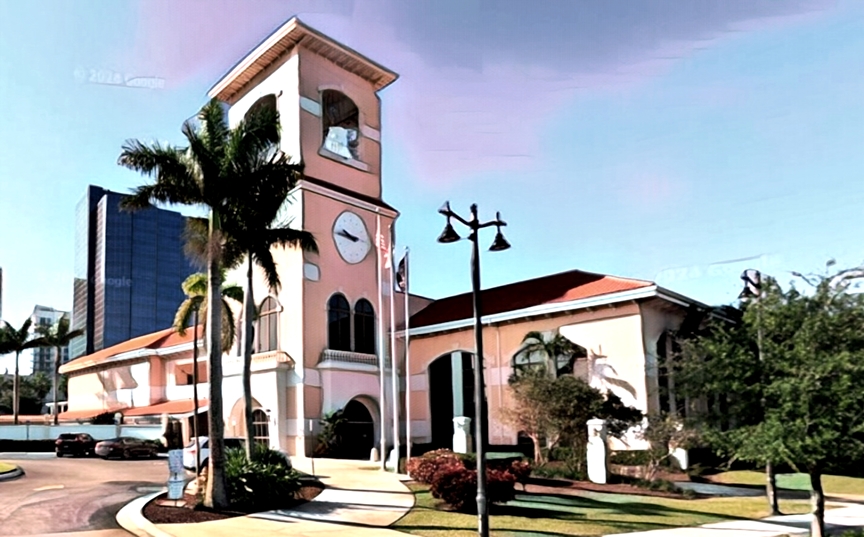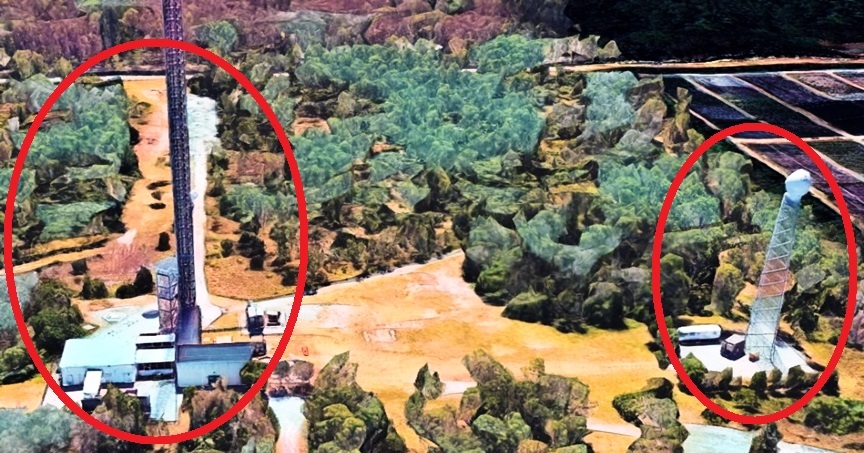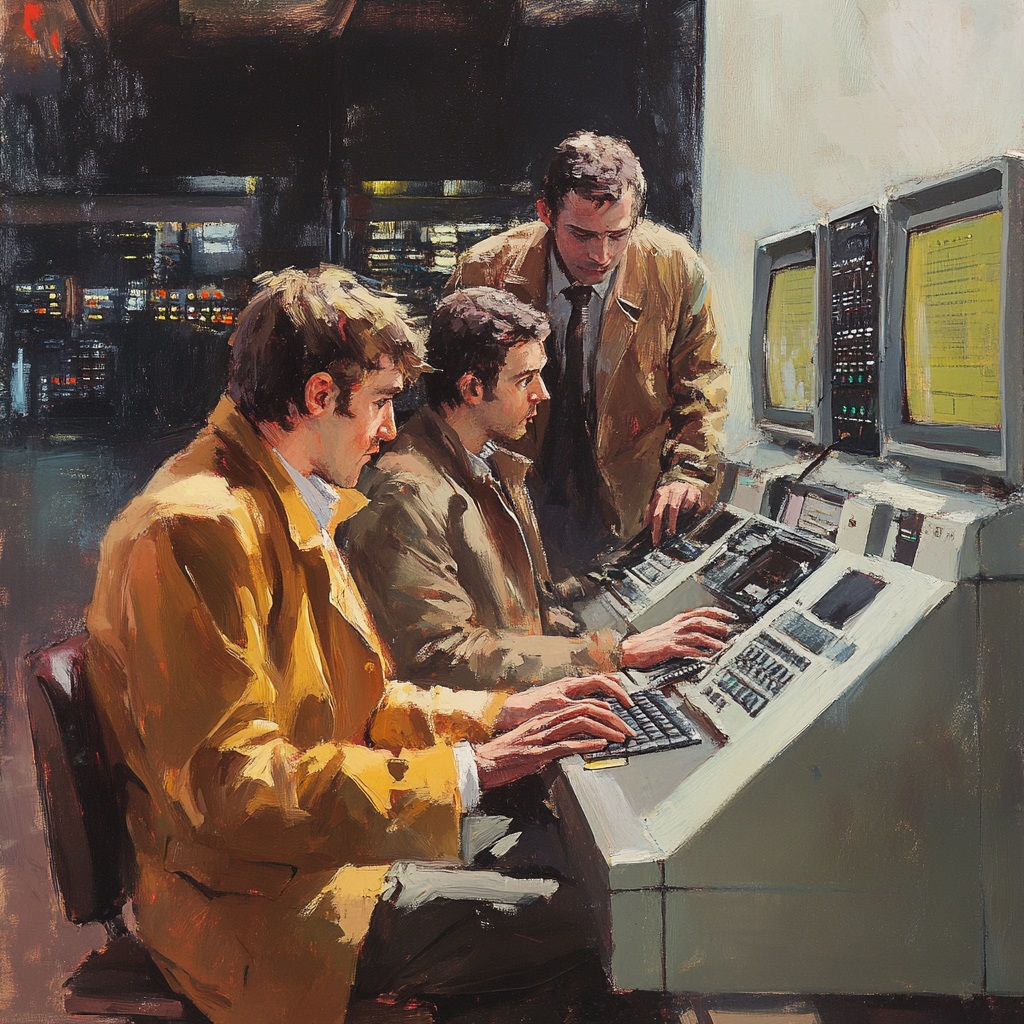 Sigma
Sigma Sigma
Sigma
If an interviewer asked me to cite a time when my life imitated art, I would argue that I was involved in a case where art imitated life. You read that right. The 2002 movie Catch Me If You Can is based on Frank Abagnale Jr.'s life. It explores deception, forgery, and identity fraud. My story takes place two years before the movie in 2000.

I was working for the VP of Engineering for Scripps Broadcasting. It was and is a group owner of many TV stations and some cable networks. Scripps had a station in West Palm, an NBC affiliate, that was building a new facility. The West Palm station had hired a new Chief Engineer the year before. The local station's General Manager was in charge of all departments. But my boss got involved with any engineering that was "running off the tracks" locally. My boss sensed something was off with the WPTV project to build a new facility. He asked me to go down and have a look.
Before I left, a friend asked me to tell him what color his hair was. He had come up to WEWS, the same Cleveland station that
The Bachelor Party
story had taken place at. My boss's office was at the WEWS facility in Cleveland. He usually interviewed all candidates for Chief Engineer. The Scripps broadcasting part of the Scripps‐Howard newspaper chain had moved to Cincinnati from Cleveland years before, but he was able to stay in Cleveland. I had an office there, too. My friend said that when he saw him in Cleveland he had red hair. But a colleague down at West Palm said his hair was blonde.
That should have raised our first flag. But we allowed it to fade into the background. He had a résumé that should have put him in his forties, but he appeared at most to be in his late twenties. For some reason, no one ever dug deep enough to uncover what cropped up later. His résumé claimed he had extensive System Integration experience. Again, for some reason, this wasn’t checked out. He could charm the pants off anyone, I don’t mean that figuratively.
Now, no one at Scripps knew this. This guy had spent his life gaming whatever system or game he was in, always for his own benefit. And sadly, it turned out he was on top of his game when he got the WPTV.
What was his game? Essentially embezzlement and fraud. Something we noticed early on was never being able to nail the equipment list down. It turns out, incredibly, he had separate equipment lists. What I saw was not what the local station's management saw.
He convinced a female salesperson at an equipment vendor to set up a fake reseller of her company's equipment. Yes, there was more than a client/vendor relationship going on. He could then stipulate that all sales from that vendor, who supplied most of the project's equipment, should go through that false seller.
So, the thing is most of the equipment was legit, and it passed through the fake company, which got a markup that ended up in his pocket. But in addition, about 10 percent of the equipment was never shipped but billed to Scripps, as this fraud company never placed the order for that equipment. Ten percent of 2 million dollars is a lot of money to pocket. Not counting the markup his fake company was hauling in.
He was a grifter. He expected to be long gone by the time the bean counters caught up with the scheme. It is what he did. The poor woman he connived into helping him with his con; I and others believe she didn’t understand what was going on, and the fact that she considered this clown a love interest possibly blinded her to the morass he lured her into. Don't know what happened to her. Sure it wasn’t good.

Another strange thing was that the Chief Engineer insisted that a number of required satellite dishes for the new site instead be installed at their transmitter site. That made no sense to any of us. It was better to install it at the studio, not at the transmitter in a swamp. A couple of miles inland from the coast, all southern Florida is swamp. A three‐quarters‐of‐a‐million‐pound, six‐hundred‐foot antenna and tower for their main transmitter would make sense in the swampy low‐rent district. But, not the much smaller satellite dishes. They had room at the station for those dishes.
At the station, you didn’t have to worry about how you would get the video and audio out to the transmit site before being uplinked or downlinked. At some point he and I made a trip out to the transmitter site so I could get a sense of what he was trying to do. We now know the main thing he was doing was defrauding everyone around him. But he finally relented and said he would take me.

The final couple hundred yards of road to the site needed a high‐clearance, four‐wheel drive vehicle. A little rain would have obviously put parts of the road under a foot or so of water. We saw a couple of gators lurking on that stretch, thankfully young ones, measuring under five feet. That most likely meant that at least there weren’t any big’uns, as they would have eaten the small ones. What spooked me more was the ripples from things slithering through the water.

We got to the site and pulled up to the building that housed the transmitter gear. Also, when we arrived, he pulled a shotgun out of a case in the bed of the truck. He said it was for protection against gators and other swamp critters. The transmitter building sat a mere fifteen feet from the tower itself. If the tower ever came down, it would take out the building and anyone in it.
Things hung on the tower are often blown off. Many of them can weigh hundreds of pounds. Fall a few hundred feet and they have the momentum of a cruise missile.
Remembering thinking that I was glad this site wasn't my responsibility. I'm fairly certain he wasn’t concerned either, as staying there any length of time wasn’t in his plans. Nearby was a Doppler radar structure. It was a wide, eighty‐foot tower with a radome on top that housed and protected the radar antenna. We referred to it as a teed‐up golf ball, as that is what it resembled. That structure looked like it had some rusted parts of its structure, also. To cut to the chase, our con man's only reason for placing the 'Sat' antenna out there was that it would be more protected. Every mile from shore gave the antenna a better chance of surviving a hurricane. That may be true. But the added complexity swamped the upside, pun intended.
In retrospect, we concluded it was a ploy. It aimed to get contractors to lay cement pads for the antenna and other stuff. This would be less scrutinized than if they were done at the station. That would offer several kickback opportunities for him.
At that time, Scripps' TV unit was interested in using telco tech to move media long distances. Today, due to advances in technology, most of the world has settled on IP technology to move media. This is mostly due to the increase in the speed of processing data. Back then, bandwidth over long distances was much less. More specialized technologies were needed to optimize performance. So, the Swiss Army Knife that IP is today wasn't possible. We were looking at a technology called ATM.
(Article I wrote about this)
Our West Palm chief engineer also took an interest in it. It turned out to be part of his downfall.
The selected carrier, Qwest Communications, had a test facility in Columbus, Ohio. They could demonstrate their ATM signal transmission method there. Columbus was a two‐and‐a‐half‐hour drive from our offices in Cleveland. My boss and another colleague arranged to drive down there on a cold day in February. When we got there, our Chief Engineer from West Palm was waiting for us. It was inexplicable how he knew the day we would travel down. He had caught a plane from West Palm to Columbus early enough to reach the facility before we did. When asked why he was there, he said he was curious about the testing. I didn't know if it was somehow linked to our discussions about using ATM in West Palm.

Anyway, we settled in to witness the test and demonstration. But then, the telco techs had trouble setting up the test path. At first, our West Palm interloper stood, looking over their shoulders. The Qwest techs were having issues trying to get the test provisioned on their terminals. Provisioning was setting up the test path to mimic a signal in a real telco environment. Next, he was sitting with them, pointing at their screen and suggesting ideas. Next, their path was working! After the fact, I asked one of them if he actually was helping or whether they were being polite. They said he actually found a couple setup errors they had missed.
Meanwhile, back to the situation in West Palm. Unknown to us, the vendor decided to audit the fake reseller they supplied. They alerted Scripps' accounting folks of their suspicions. All this happened while our imposter was up with us playing telco consultant. Also, he took a couple of days’ vacation after Columbus. Enough time for Scripps' management to confront their local GM and ops manager. They had to face the likely scam afoot. The company suspended, then fired, their chief at the week's start. They told him to clean out his desk. But, a couple of West Palm police officers awaited him. They arrested him.

Now the rest of his history came out. He had spent some time in prison, as he didn’t always get away with his deeds. He had been caught masquerading as a surgeon in a hospital. Don’t think he did any actual surgery. Also, a big shot news producer. At 19, he hired a private jet and rented high‐end TV gear and flew to San Francisco after the 1989 Loma Prieta earthquake. He pretended to be a CNN producer. He left many vendors high and dry when it came to payment.
He claimed to be an ex‐military pilot and a retired junior exec on a submarine. He scammed people out of rides in business jets, hotel rooms, and plenty of limo rides. He embezzled money from a couple of companies and the deeds of houses from a couple of older ladies. Somehow, he was always able to erase his past, at least to non‐law enforcement.
After his arrest my boss asked him how he knew so much about the various careers he impersonated. He stated that he read a book about each. Turns out the guy had a photographic memory! Often, he might have been the smartest guy in the room! Too bad he didn’t apply that intellect to things more positive.
In my life, he resurfaced briefly in 2005. A colleague at KGO, the ABC O&O in San Francisco called me and asked what I thought of him. I was shocked to learn that he was still interviewing in the industry. The KGO person, then the Assistant Chief Engineer, said they saw a reference to Scripps on his resume. My friend knew I had also worked at Scripps. I told him the above story.